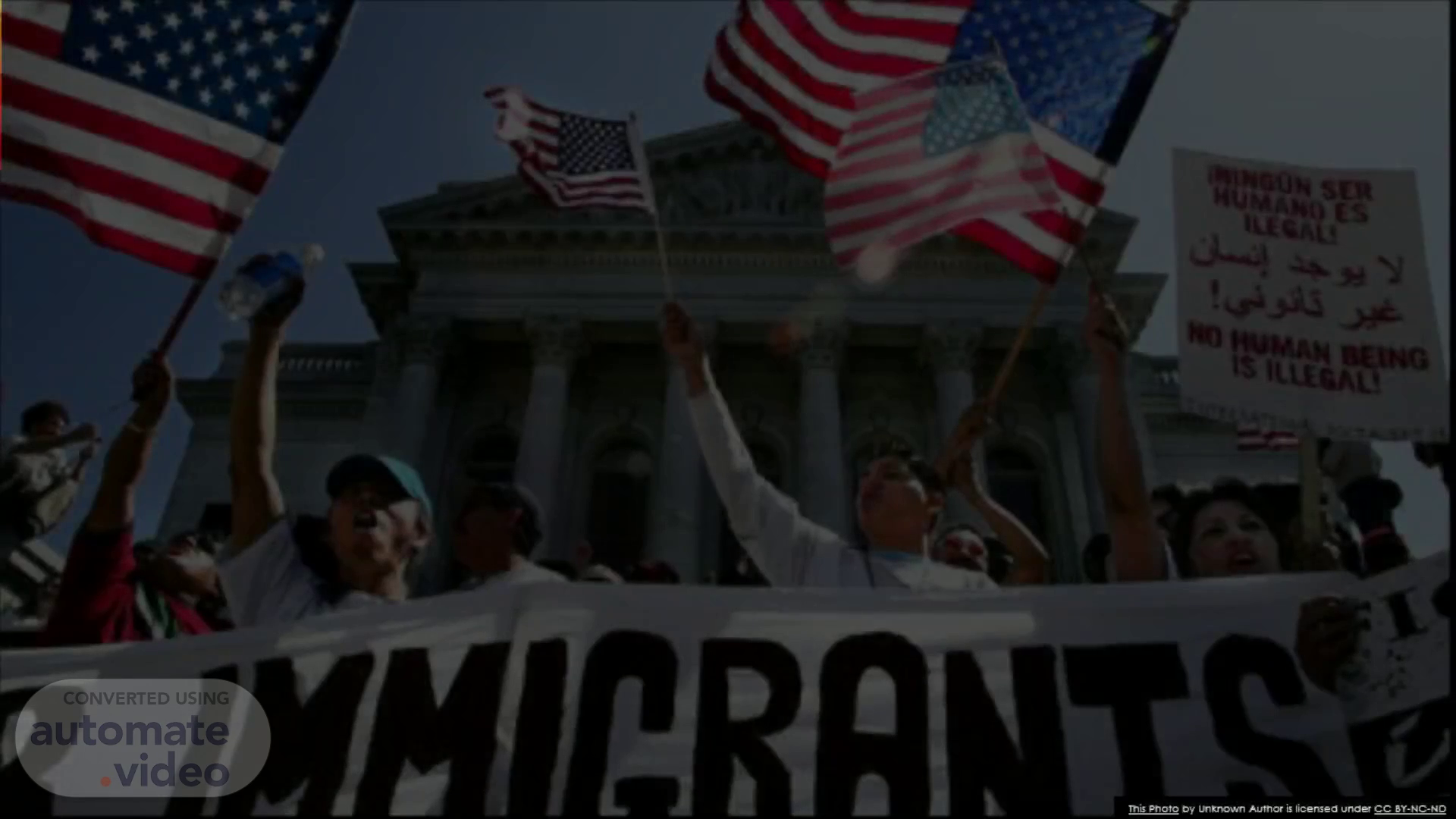
Changing Attitudes Towards Migrants in the U.S
Scene 1 (0s)
[Audio] Introduction: Changing attitudes towards migrants in the U.S. How attitudes towards immigration changed overtime and what influenced those changes?.
Scene 2 (14s)
[Audio] Middle: When you think of the word immigration what image immediately comes to mind? Is it the image of large groups of people traveling together to find another place to live? Or the image of family's crossing borders in packed cars? Or maybe you picture people standing together to demand reform towards laws that target and exploit them?.
Scene 3 (39s)
[Audio] No matter what images come to your mind about immigration the history of it is painted as something that is natural. Immigration began with Native Americans who crossed a narrow split of land that connected Asia to North America 20,000 years ago. By the 1600's Europeans also began to immigrate; the pilgrims and puritans sailed on the Mayflower to the United States. Then in 1892, Ellis Island opened on New York's harbor. More than 12 million immigrants would soon enter the U.S and reestablish themselves..
Scene 4 (1m 18s)
[Audio] Immigration is an act that all races participate in. At one point in time your ancestors were immigrants too. They most likely emigrated because they wanted better opportunities so that their next of kin would not experience any lack of freedom or poverty. So why are negative connotations associated with immigration during this day and age especialluy when it was once encouraged by world?.
Scene 5 (1m 48s)
[Audio] What changed? Attitudes began to change towards immigration in 1882 when congress passed the Chinese exclusion act. This act banned Chinese immigrants from entering the U.S. The xenophobia continues to grows in 1917 when congress passes a policy that requires a literacy test for all immigrants; the law limited the number of foreign speakers that were allowed to immigrate to the U.S. Congress passed another exclusion act in 1924 that then capped the number of immigrants that could emigrate into the United States. Legislation began to favor immigration from Northern and Western European countries while limiting countries in Southern and Eastern Europe and completely excluding countries in Asia & Africa..
Scene 6 (2m 39s)
[Audio] Outro: the negative connotations associated with immigration is clearly directed towards black or brown immigrants. The new narrative welcomes all refugees looking to better their lives and once again sees the United States as a melting pot that encourages diversity..